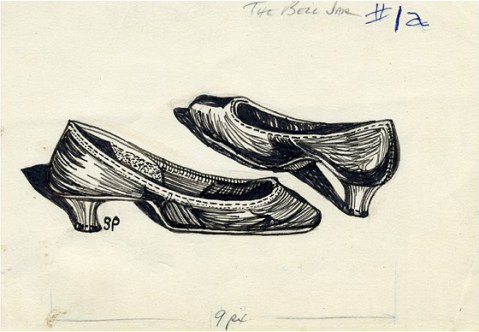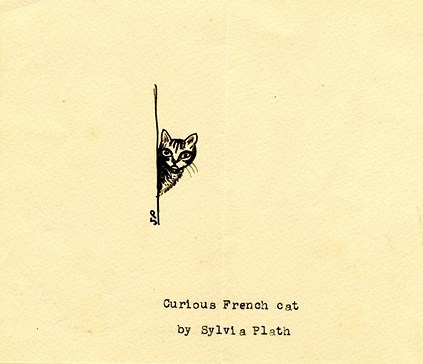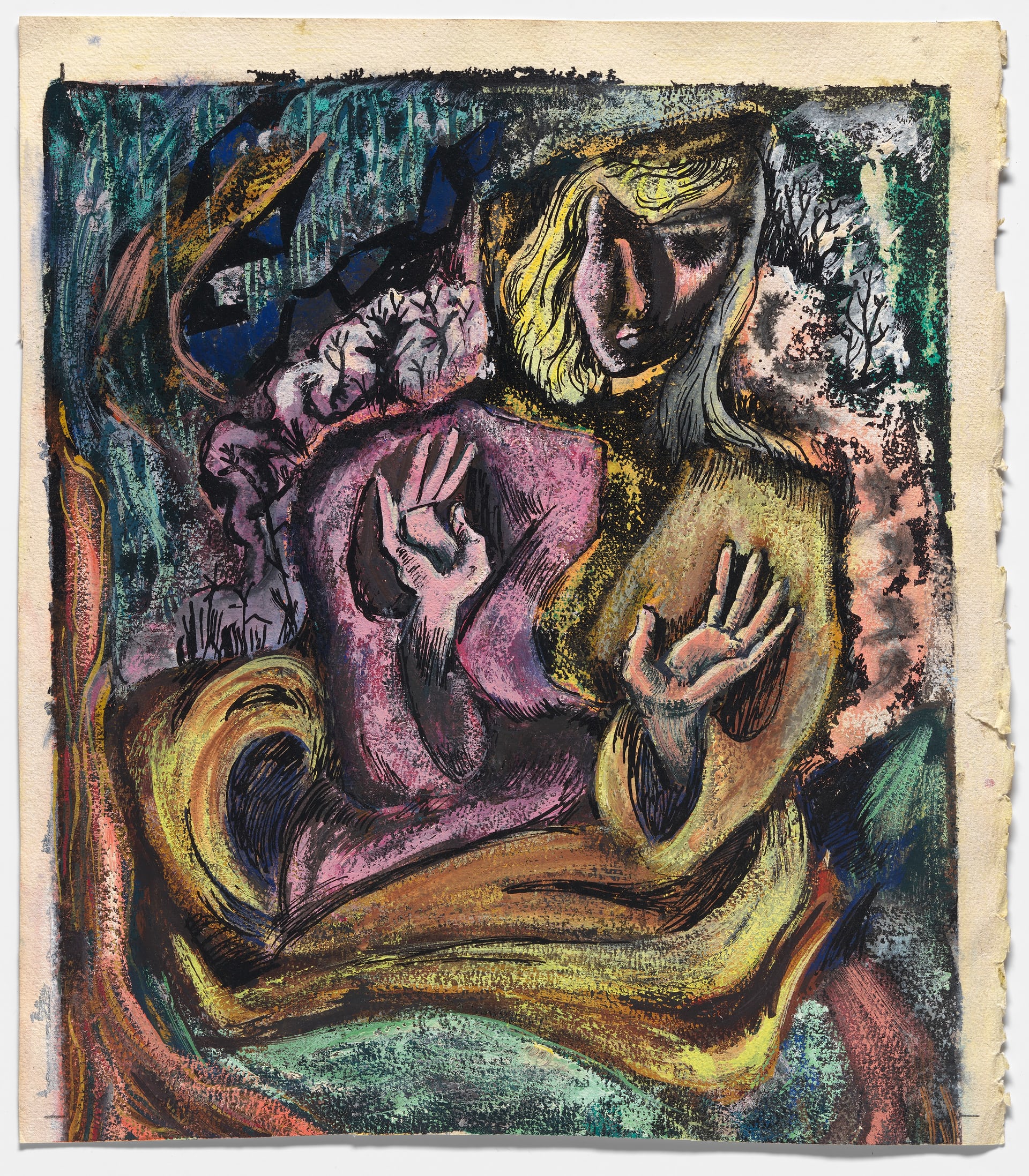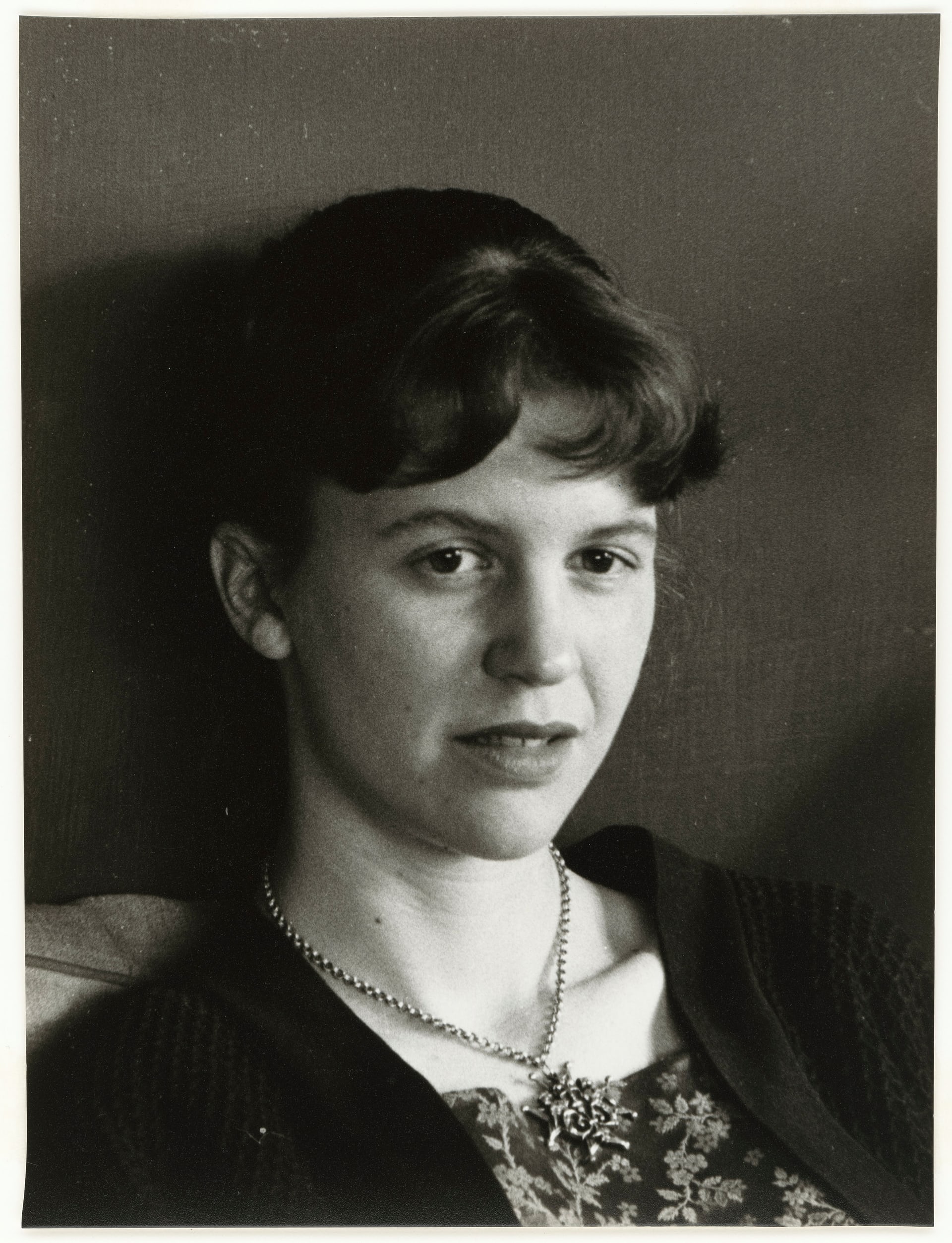A photographic history of Sylvia Plath (October 27, 1932 – February 11, 1963) at the National Portrait Gallery, Washington DC, takes in the artist’s self-portraits, letters, pen and ink sketches and personal objects – her childhood ponytail kept by her mother is one notable curio. What might be termed ‘Sylvia’s Plait’.
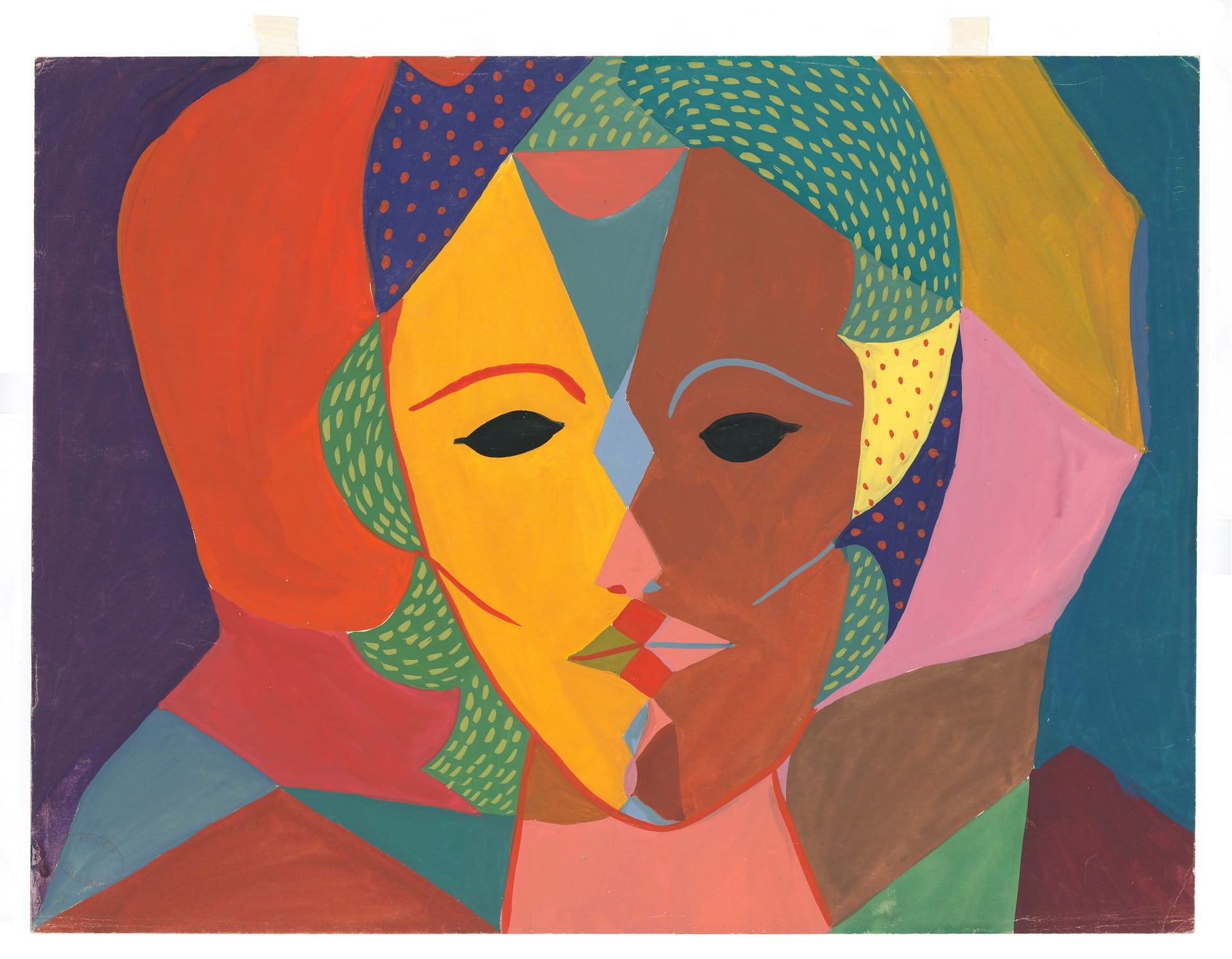
Triple-Face Portrait, c 1950-1951. Photograph: © The Estate of Sylvia Plath/Courtesy The Lilly Library, Indiana University, Bloomington, Indiana
I love people. Everybody. I love them, I think, as a stamp collector loves his collection. Every story, every incident, every bit of conversation is raw material for me. My love’s not impersonal yet not wholly subjective either. I would like to be everyone, a cripple, a dying man, a whore, and then come back to write about my thoughts, my emotions, as that person. But I am not omniscient. I have to live my life, and it is the only one I’ll ever have. And you cannot regard your own life with objective curiosity all the time…
– Sylvia Plath, The Unabridged Journals of Sylvia Plath

Plath’s ‘Marilyn Monroe’ shot, June 1954. Photograph: Gordon Ames Lameyer/Courtesy The Lilly Library, Indiana University, Bloomington, Indiana
I’ve discovered my deepest source of inspiration, which is art: the art of the primitives like Henri Rousseau, Gauguin, Paul Klee, and De Chirico. I have got out piles of wonderful books from the Art Library (suggested by this fine Modern Art Course I’m auditing each week) and am overflowing with ideas and inspirations, as I’ve been bottling up a geyser for a year.
– Sylvia Plath’s letter to her mother, March 1958
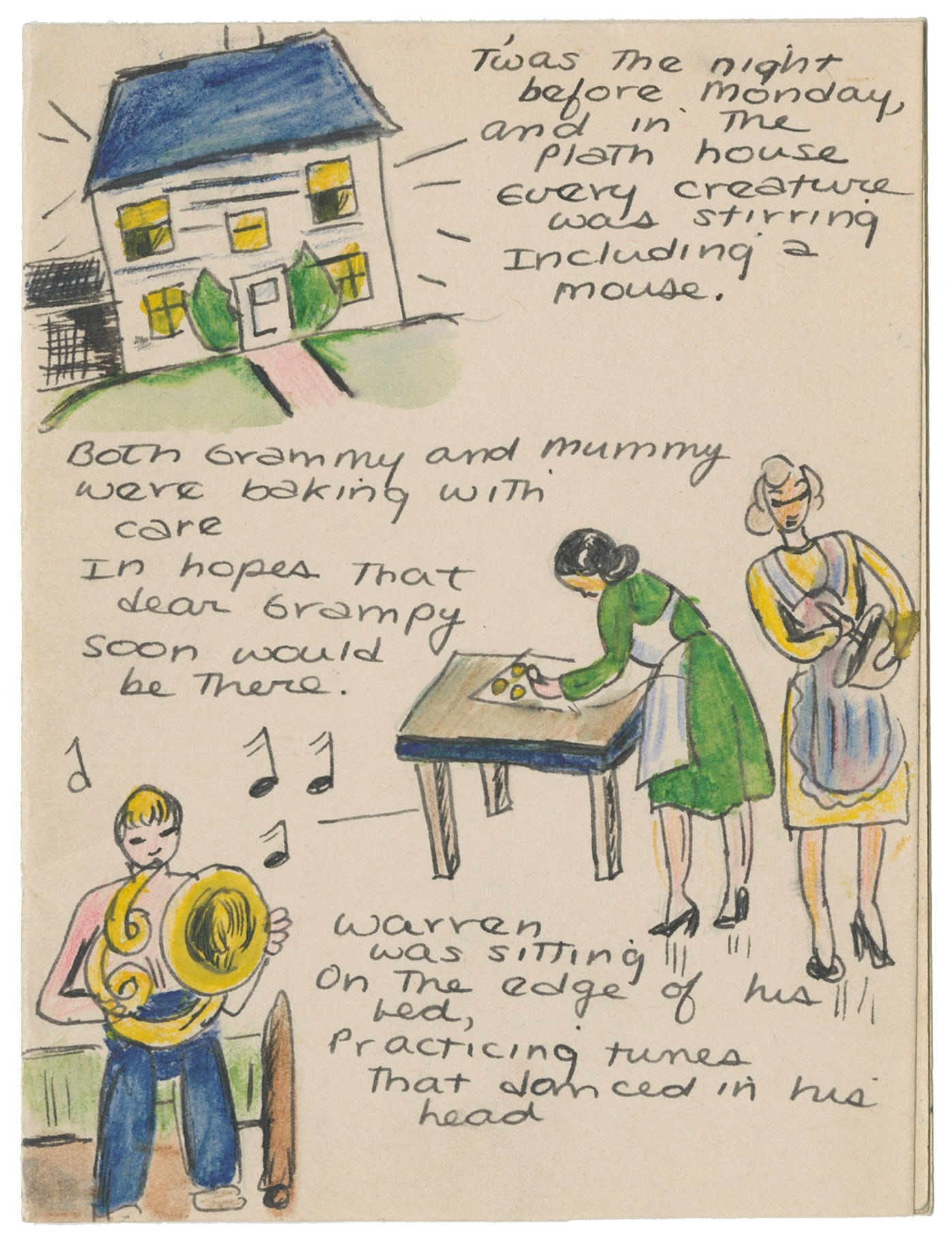
’Twas the Night Before Monday, undated. Photograph: Courtesy The Lilly Library, Indiana University, Bloomington, Indiana
My latest ambition [is] to make a sheaf of detailed stylized small drawings of plants, mail-boxes, little scenes, and send them to the New Yorker which is full of these black-and-white things — if I could establish a style, which would be a kind of child-like simplifying of each object into design, peasantish decorative motifs, perhaps I could become one of the little people who draws a rose here, a snowflake there, to stick in the middle of a story to break the continuous mat of print; they print everything from wastebaskets to city-street scenes.
– Sylvia Plath, letter to Ted Hughes, October 1956
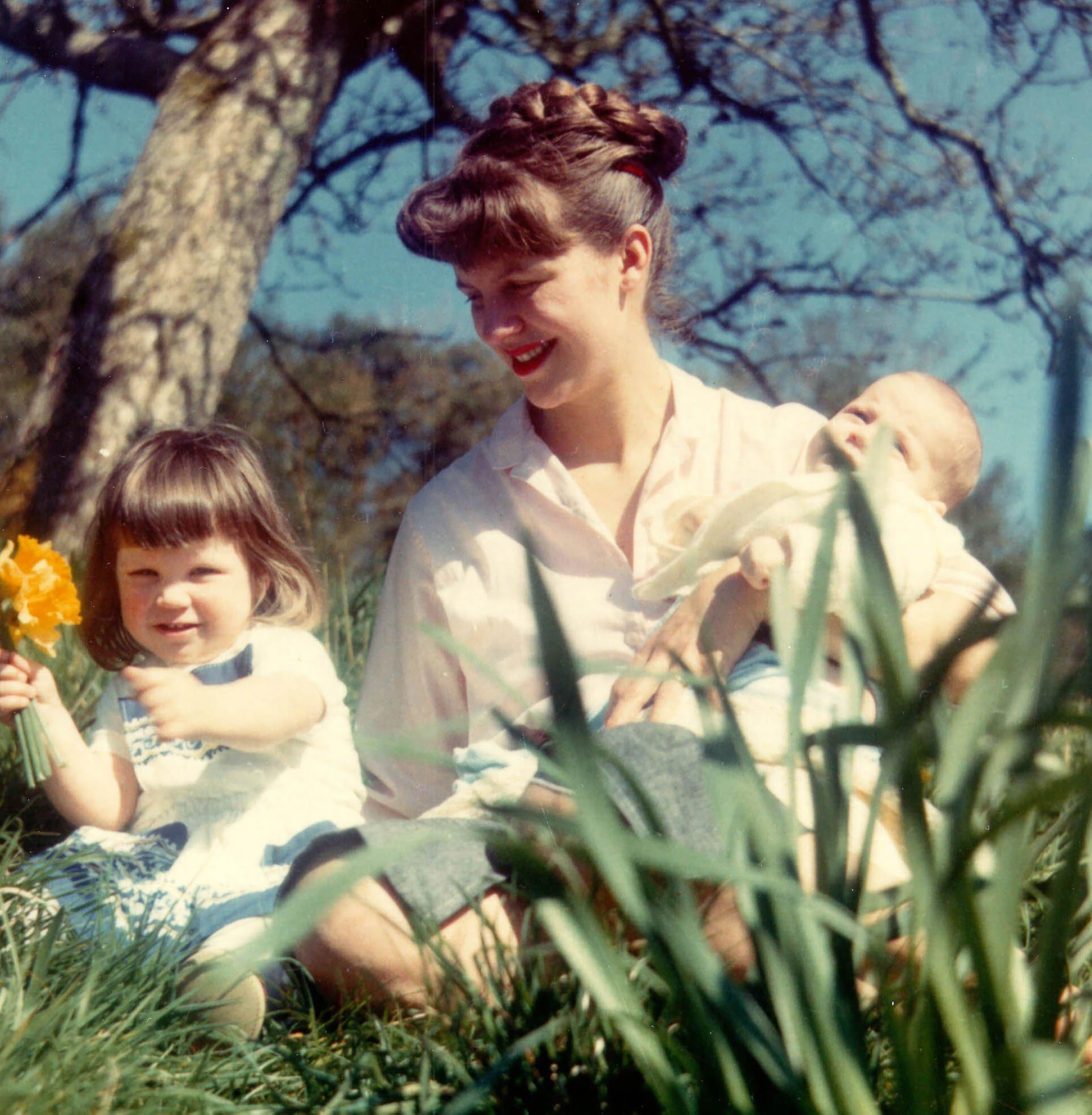
Sylvia Plath with her two children, Nicholas and Frieda, April 1962. Photograph: Siv Arb/Writer Pictures
Yesterday I drew a good umbrella and a chianti bottle, better chestnuts, bad shoes and a beaujolais bottle. Soon I will go about fanatically doing exact and painstaking landscapes of grass-blades — but I bet if I covered a page of grass-blades it would sell; I keep seeing Infinity in a grain of sand.
– Sylvia Plath, letter to Ted Hughes, October 1956
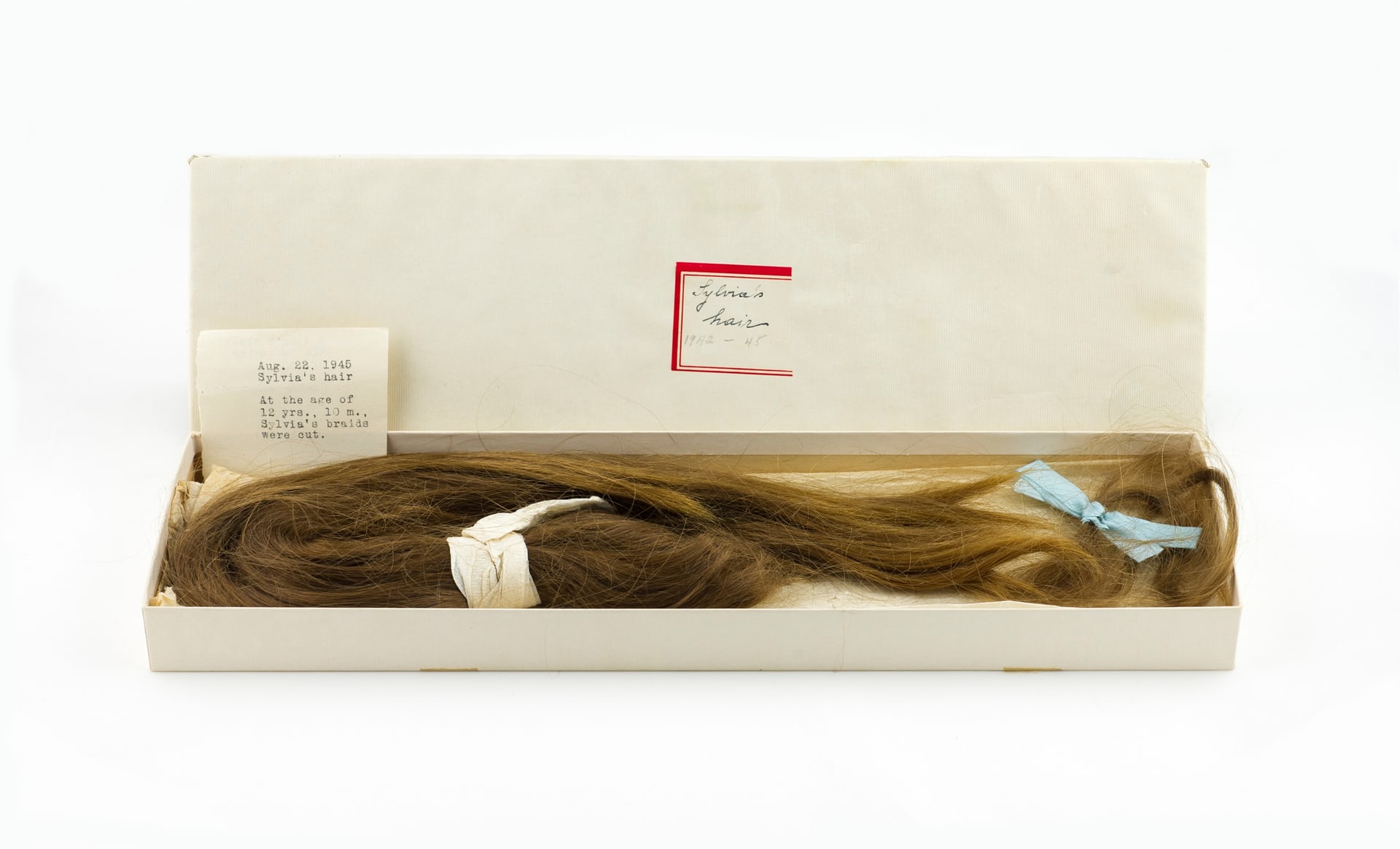
Sylvia Plath’s Childhood Ponytail with her mother’s inscription, August 1945
Photograph: Courtesy The Lilly Library, Indiana University, Bloomington, Indiana
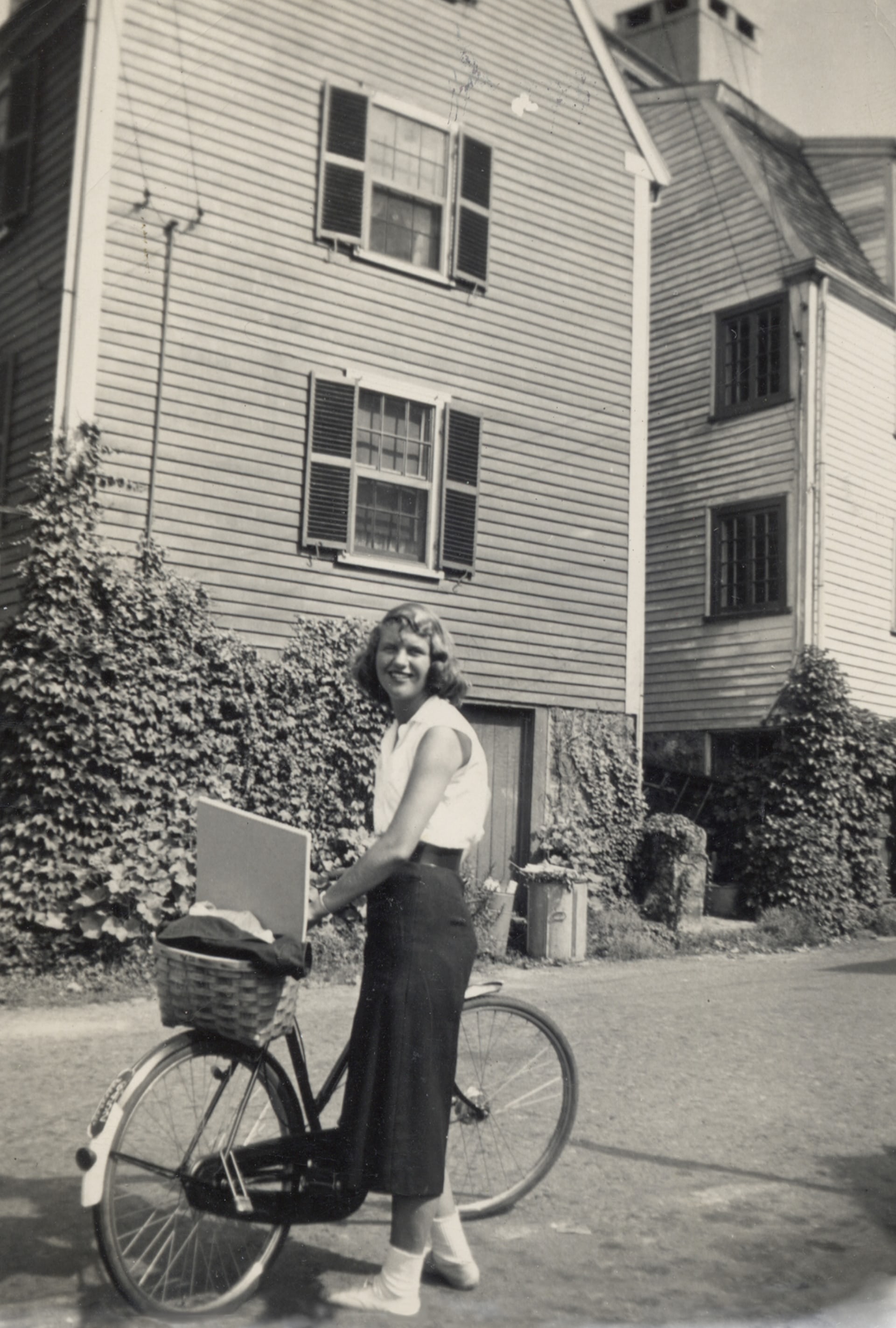
Sylvia Plath standing beside her bicycle, Marblehead, Massachusetts, 1951
Photograph: Marcia B Stern/Mortimer Rare Book Collection, Smith College, Northampton, Massachusetts
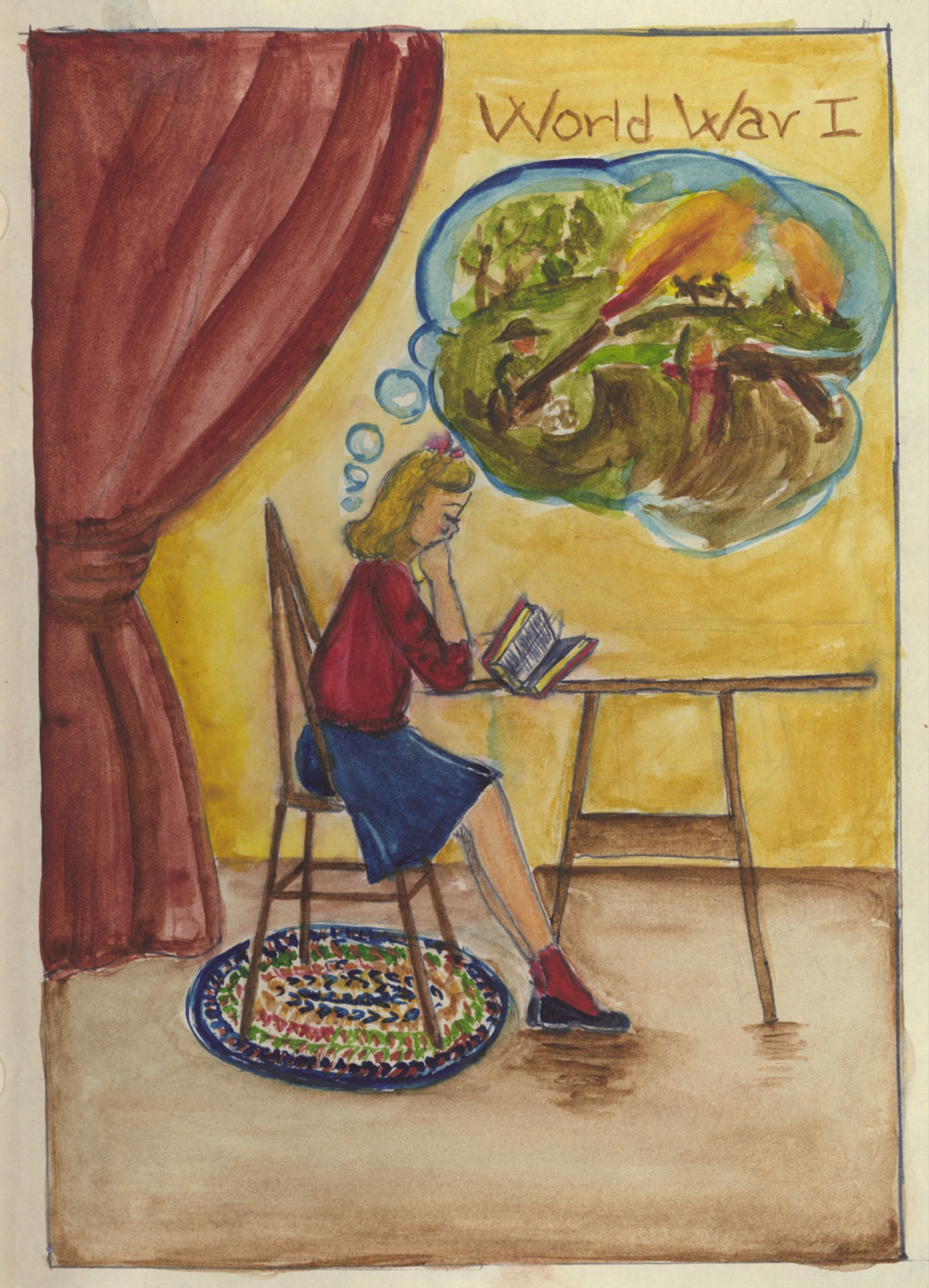
A War to End Wars, self-portrait, 26 February 1946
Photograph: © Estate of Sylvia Plath/Mortimer Rare Book Collection, Smith College, Northampton, Massachusetts

Studio photograph of Sylvia Plath, 1954
Photograph: Warren Kay Vantine/College Archives, Smith College, Northampton, Massachusetts
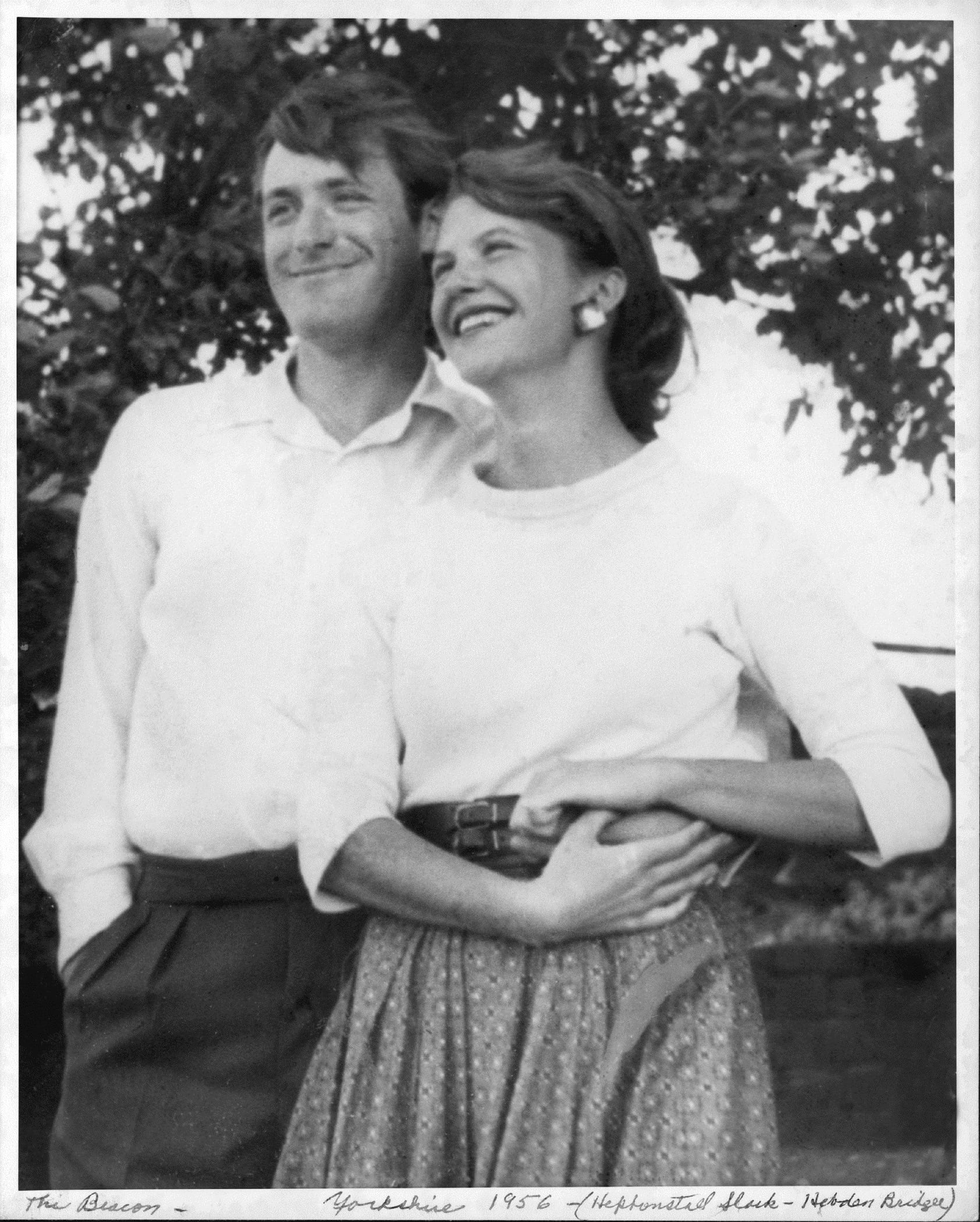
Ted Hughes and Sylvia Plath in Yorkshire, UK, 1956
Photograph: Harry Ogden/Courtesy Mortimer Rare Book Collection, Smith College, Northampton, Massachusetts
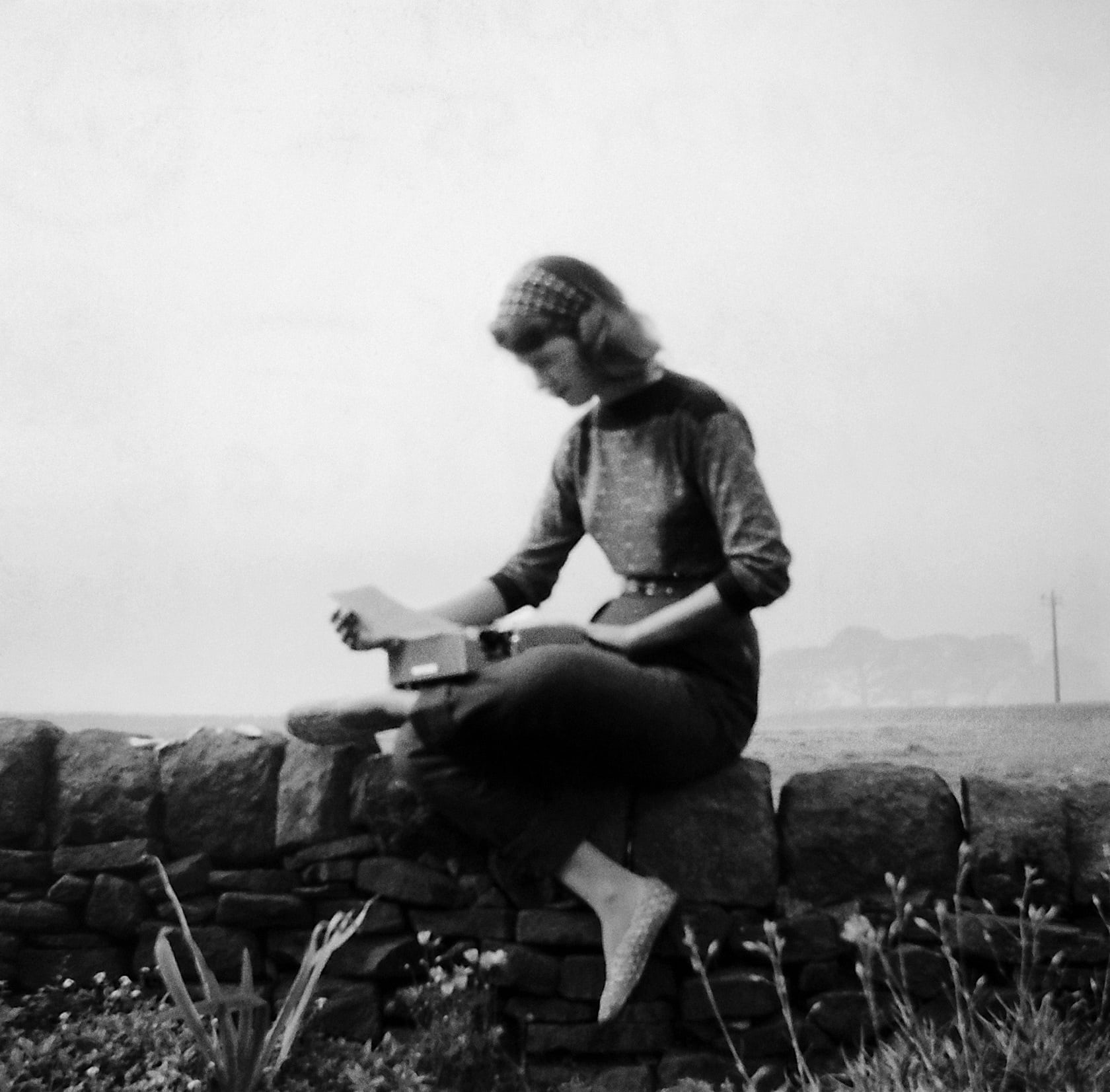
Sylvia Plath with typewriter in Yorkshire, September 1956
Photograph: Elinor Friedman Klein/Mortimer Rare Book Room, Smith College, Northampton, Massachusetts
Via: The Guardian. See Sylvia Plath: One Life.
Would you like to support Flashbak?
Please consider making a donation to our site. We don't want to rely on ads to bring you the best of visual culture. You can also support us by signing up to our Mailing List. And you can also follow us on Facebook, Instagram and Twitter. For great art and culture delivered to your door, visit our shop.

